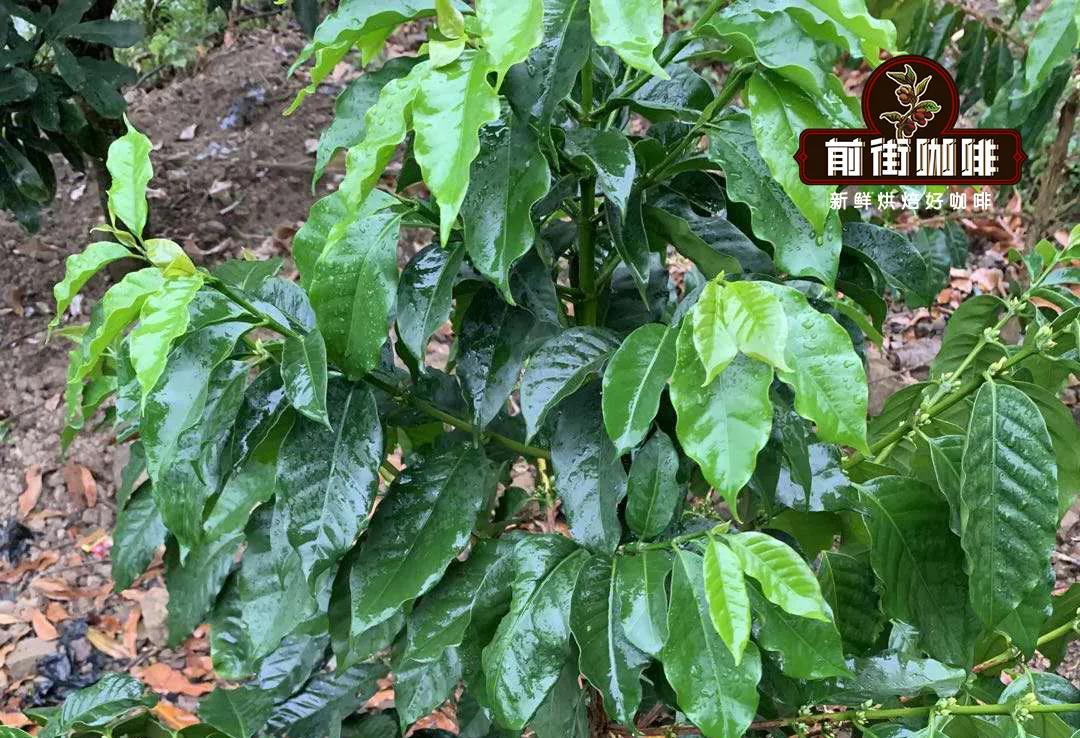A brief history of Malagasy coffee. Malagasy organic coffee without organic verification.
When it comes to Madagascar, we may first think of our favorite animal cartoons, but Qianjie Coffee is going to talk about its coffee today. How did Malagasy coffee spread to Madagascar? Does it play an important role in society? What is the uniqueness of their coffee culture?
Madagascar is an island country in the Indian Ocean and the fourth largest island country in the world. Separated from the Indian subcontinent 8800 years ago, animals and plants were allowed to evolve in relative isolation: more than 90 per cent of its wild animals could not be found anywhere else on earth.
It is now guaranteed that one of the other things found there is coffee. For Malagasy, coffee is a way of life, a real national obsession. Malagasy people are committed to producing and consuming the world's most popular caffeinated drinks.
A brief History of Coffee in Madagascar
Coffee was first introduced to Madagascar's neighboring island, Reunion, formerly known as Bourbon. The coffee came from Ethiopia and had some success before its rapid decline. Like any industrious farmer, these Reunion Creoles brought plants to Madagascar and continued coffee production there.
However, French colonists arrived in Madagascar in 1895 and quickly controlled coffee production. The colonial policy made coffee a major export on the island in the 1930s. One advantage is that they have inadvertently promoted the production of small farmers in Madagascar.
But in 1947, a resource-based uprising between French Reunion Creoles and native Malagasy nationalists led to one of the bloodiest events in French colonial history. The conflict between the two opposing sides has left a deep scar on Malagasy society.
Madagascar became independent in 1960 and was one of the island's largest coffee exporters until the 1980s. During this period, Madagascar was the eighth largest coffee producer in the world.
In addition to coffee, cloves, vanilla and rice are also exported-most of this agriculture is used to make ends meet. Farmers mainly grow things that they can support their families and sell leftovers in the local market.

Coffee itself
Coffee grown in Madagascar has changed over time. Although low-grade robusta beans used to be grown in the country, the number of high-end Arabica beans has increased. About 90% of the coffee produced in Madagascar is still robusta coffee, but Arabica coffee now accounts for the remaining 10%.
Robusta coffee beans exported from Madagascar are now considered of high quality. Most Robusta coffee is exported to France.
Robusta grows in the tropics of the country at an altitude of 100-300m, located in the Vatovavy-Fitovivany region, on the east coast of Antalaha and Tamataf, as well as on the Northwestern Noxibe and Sambilano rivers near Ambania.
Arabica coffee grows at high altitudes near the central highlands, Antananarivo province and Lake Araotra.
Produce coffee
Small family-run farms dominate Madagascar. These farmers have invested the necessary time and energy to ensure high-quality products. The coffee cherries are picked, washed and dried by hand.
Most of the crops here, including coffee, have been produced organically for centuries, but have not been certified. By mixing crops and relying on natural wild fertilizers, these farmers ensure that coffee is grown in the healthiest way. This encourages biodiversity and the continued use of wild pest control to minimize pollution to the natural environment.
Madagascar's success in exporting other quality crops, such as vanilla, has led to optimism that their Arabica coffee beans will make a deep impression on the international boutique coffee market. In 2017, Madagascar exported 1600 tons of prefabricated vanilla, worth more than $680 million-coffee will one day reach these big numbers!
Important Notice :
前街咖啡 FrontStreet Coffee has moved to new addredd:
FrontStreet Coffee Address: 315,Donghua East Road,GuangZhou
Tel:020 38364473
- Prev

The Best Organic Decaf Coffee Recommended Is decaffeinated coffee harmful?
Decaffeinated drinkers seem to be more health-conscious. They are not heavy coffee or alcohol drinkers, nor are they regular smokers. There are many brands on the market for every brewing method that can provide healthy options for anyone who still wants to enjoy coffee without harmful side effects. Decaffeinated coffee has grown in popularity in the beverage market over the years. a most
- Next

How to choose the size of coffee beans and how to grind your favorite coffee beans perfectly
It's no secret that coffee is good for you. However, taste is an important factor in whether coffee drinkers really like coffee. Buying coffee beans will help maintain the freshness and flavor of your favorite coffee in the coming months. Many coffee fans choose to buy coffee beans and grind them at home immediately before making boutique coffee; this extra step creates a coffee quality.
Related
- What brand of black coffee is the most authentic and delicious? what are the characteristics of the flavor of the authentic Rose Summer Black Coffee?
- Introduction to the principle and characteristics of the correct use of mocha pot A detailed course of mocha pot brewing coffee is described in five steps.
- Which is better, decaf or regular coffee? how is decaf made?
- How much is a bag of four cat coffee?
- How about four Cat Coffee or Nestle Coffee? why is it a cheap scam?
- Which is better, Yunnan four Cats Coffee or Nestle Coffee? How about cat coffee? is it a fake scam? why is it so cheap?
- How about Cat Coffee? what grade is a hoax? which instant coffee tastes better, four Cat Coffee, Nestle Coffee or G7 coffee?
- Process flow chart of coffee making-Starbucks coffee making process what coffee tastes good at Starbucks
- The top ten best coffee beans in the world Rose summer coffee or Tanzanian coffee tastes good
- Yunnan four cat coffee is good to drink?_four cat coffee is a big brand? four cat blue mountain coffee is fake?

